From time immemorial, people have settled on the banks of rivers and lakes, because they knew: they mean life! Rivers and floodplains provide local communities with food and other resources that allow them to thrive. In part, these products and materials reach the inhabitants of large cities, so one way or another we all depend on rivers.
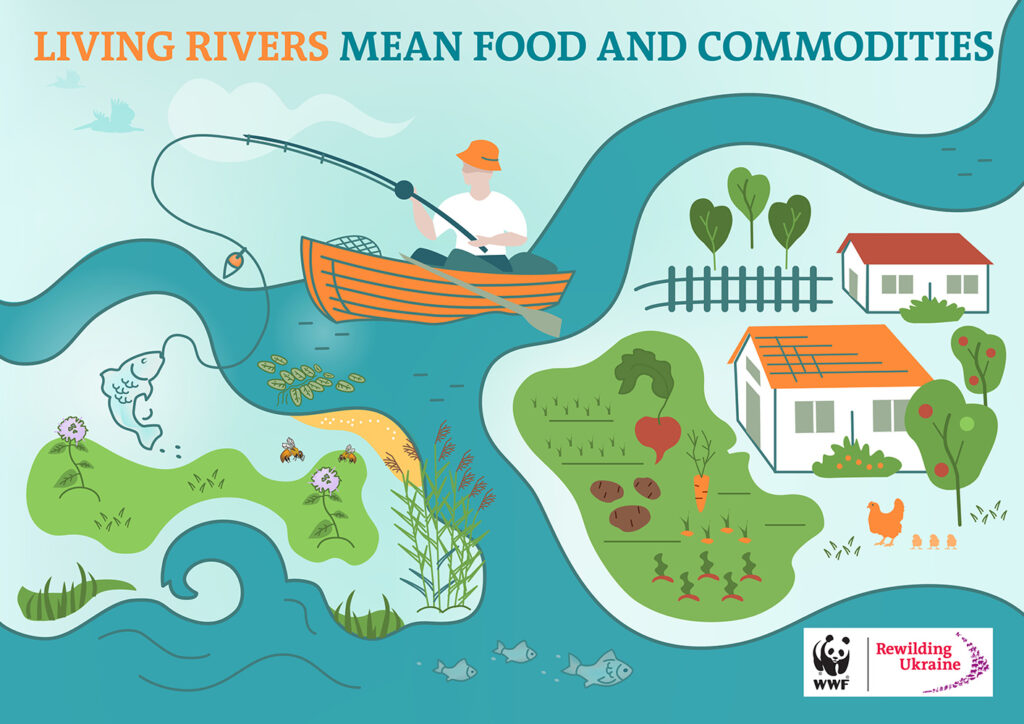
Catch, fish, big and small
If we ask even a small child “What does the river give?”, one of the first answers will be “Fish”. Indeed, there are fish in the rivers that come to our table by commercial or recreational fishing. If a river or lake is clean and “healthy”, it can supply people with a variety of fish for every taste. From widespread crucian carp, perch and rudd, to more delicious pike, catfish and even sturgeon. The latter should be mentioned separately, because these fish are not only extremely rare but also very interesting.
There are 6 species of sturgeon in Ukraine, including the most famous Russian sturgeon and beluga. Beluga is the largest freshwater fish in the world, it can reach a length of more than 5 meters (like a medium-sized bus!) and weigh up to 2000 kg. Beluga lives up to 100 years. Not only beluga, but all sturgeon are contemporaries of dinosaurs, and are considered “relict” species because they have hardly changed since then. Surviving dinosaurs, these unique fish, unfortunately, may not survive our generation. Various threats, including the construction of dams on large rivers, poaching for black caviar, and loss of habitat, have critically reduced the number of sturgeons in our waters and around the world. All six sturgeon species still found in our country are listed in the Red Book of Ukraine and the International Red List, so their capture is strictly prohibited. Until their populations recover in the wild, caviar and meat from these fish can only be legally eaten from sturgeon grown in aquaculture.
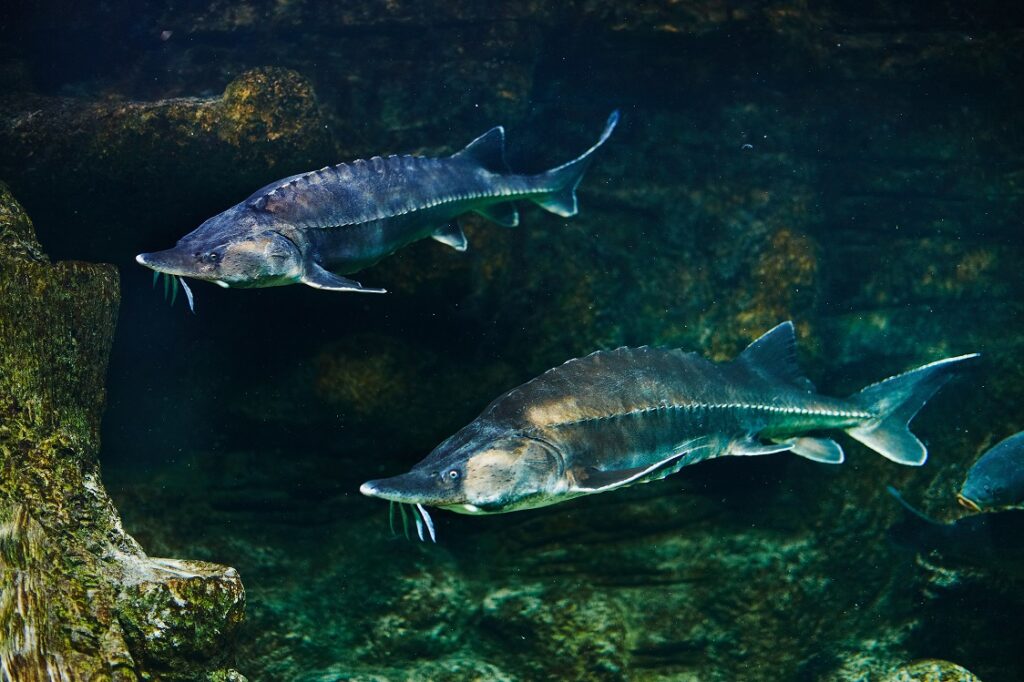
Some fish, on the other hand, are commercially caught and still occur in our rivers in sufficient numbers. These include Danube herring, pikeperch, carp and others. In general, fish stocks in Ukraine and the world are rapidly declining. A number of restrictions are announced to preserve and restore them: time and place restrictions, a ban on some barbaric fishing gear, such as explosives, trawling, “armor-piercing” nets, and more.
Grasses, frogs, and bees
In addition to fish, there are other river resources that people use as food. These include crayfish, frogs (they are eaten not only in France but also in our country), mollusks, certain species of waterfowl, etc., as well as some algae and aquatic plants. For example, water caltrop has long been used for cooking. Its stores have been found even in Stone Age settlements, where it was probably no less common than potatoes today.
In general, plants that grow on river banks and in floodplains are widely used by humans: as tea, as part of medicines, in perfumery, for decorative purposes, wood for firewood, and so on. In addition, river or delta honey collected by bees from flowering river plants is in demand. It has a light texture and rich original taste.
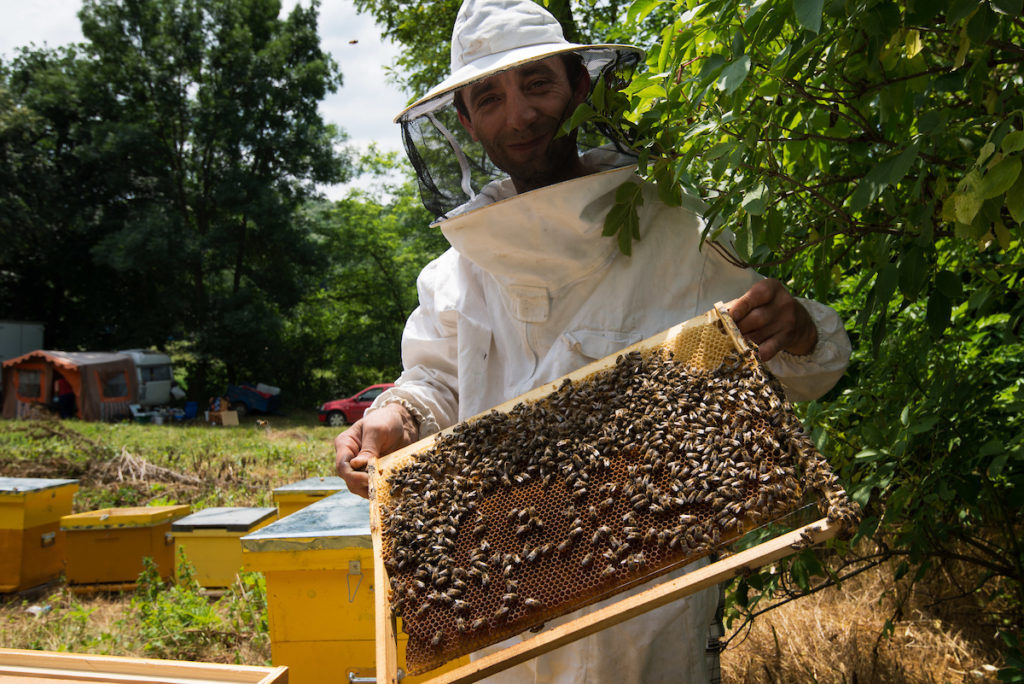
Building store
Rivers and floodplains also provide people with materials used in construction. Gravel, sand and clay are collected along the banks and at the bottom of rivers. This process must be controlled and limited because the extraction of materials on an industrial scale disrupts natural systems and destroys their biodiversity.
In addition, the trunks and branches of the trees growing along river banks are also used as building materials. In many regions of Ukraine, willow twigs are used to make wattle fences near houses, as well as to weave various products: baskets, bast shoes, talismans, and various decorative items.
Roofs made of reeds are in demand in our country and abroad. This material is renewable, every year the part of the reed above the water dries out and grows back in the next spring. Reed roof is completely environmentally friendly, retains heat well in winter, does not allow the house to overheat in summer, absorbs noise, is resistant to changes in temperature and humidity in the environment, and more. In addition, it looks very authentic and beautiful. Our reed is exported to Germany, the Netherlands, Denmark, and other countries where such roofs are very popular. Substandard remnants of reeds and tree branches can be used to make briquettes and pellets for heating buildings.
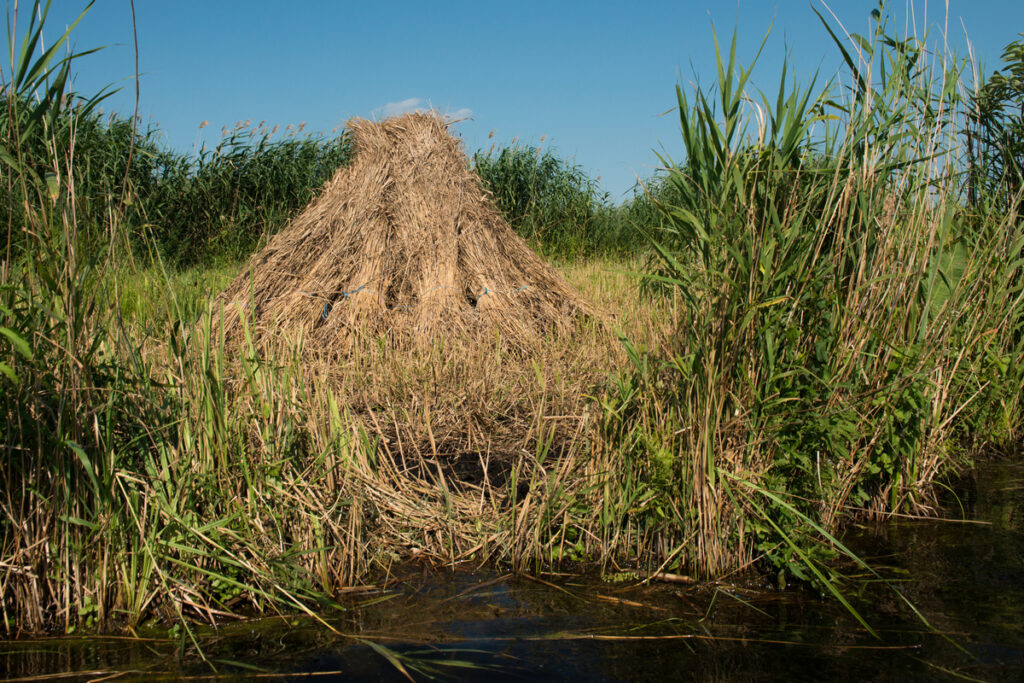
Agricultural products
We use water from nearby water bodies to irrigate fields and gardens, and graze our cattle on meadows along rivers. Therefore, in the regions with lakes, floodplains and rivers, agriculture develops better than in arid areas. An interesting example, in the Danube delta people use natural river islands for gardening or even create artificial ones. They grow strawberries, grapes, and fruits, which are in demand among residents throughout southern Ukraine. Communities grow a special grape variety here, which is used for making the local wine “novak” with a unique aroma and taste. According to the people of Vylkove, this is due to the fact that grapes grow alongside strawberries and fruits and are saturated with their aromas.
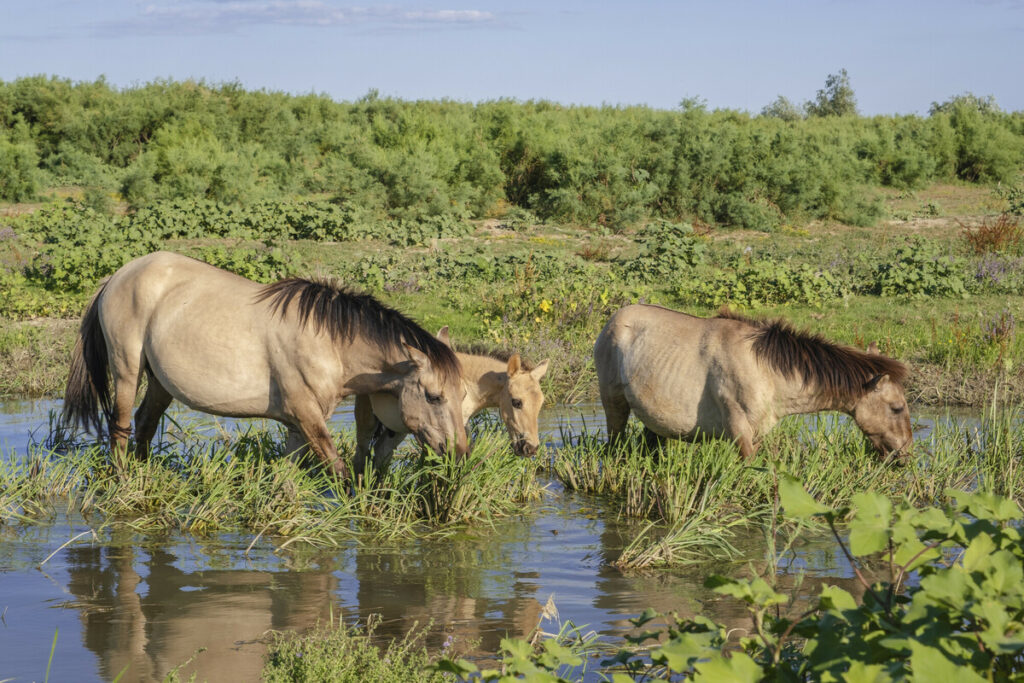
As we can see, the list of resources that rivers and floodplains provide us is impressive. If you visit different regions of the country, it can be even longer. We need to preserve and restore our water bodies and surrounding natural areas in order to receive all these valuable resources in the required quantity and good quality.
The article is part of a joint awareness campaign of Rewilding Ukraine and WWF-Ukraine “Living rivers are more than just water” which aims to draw the attention of Ukrainians to the value of rivers and wetlands. Read also other thematic articles: Living rivers mean clean drinking water, Living rivers mean tourism.